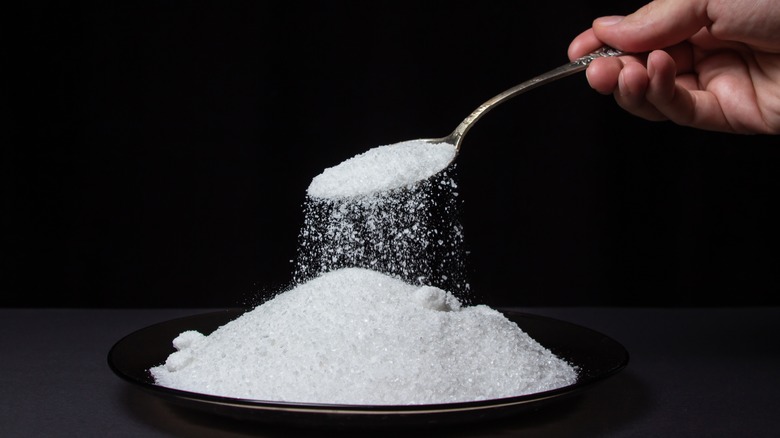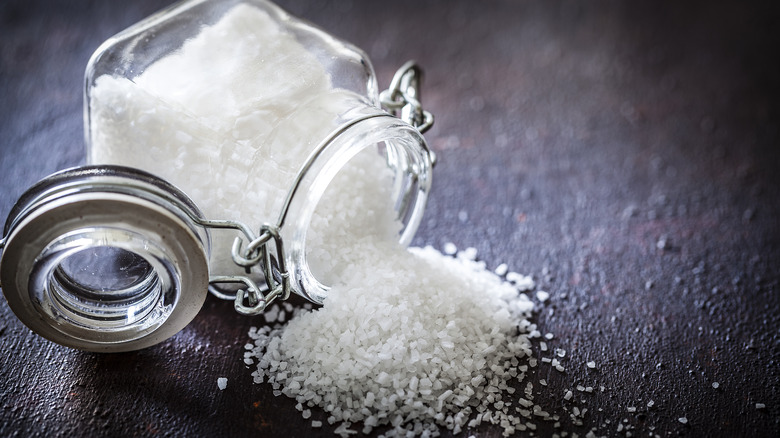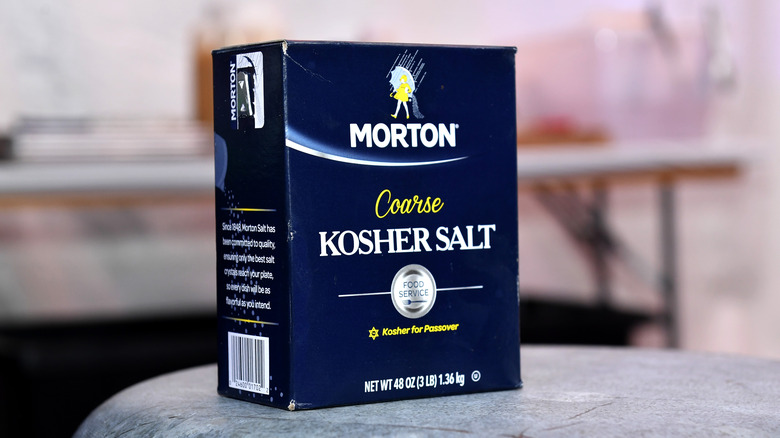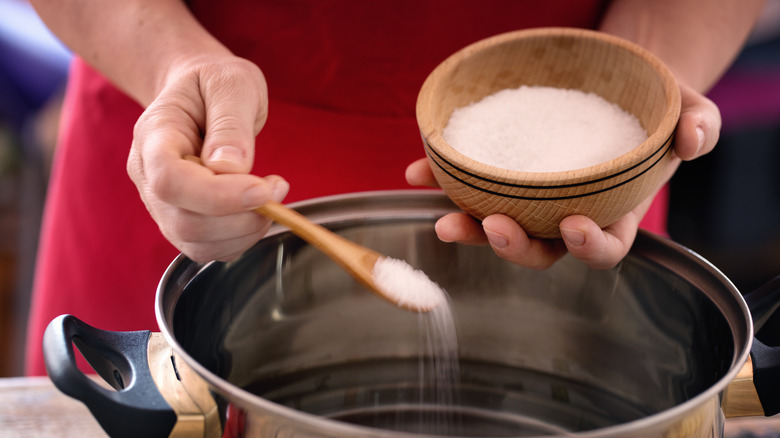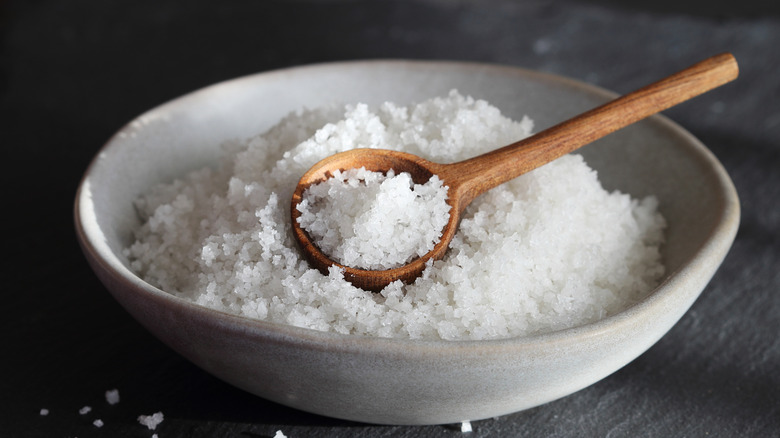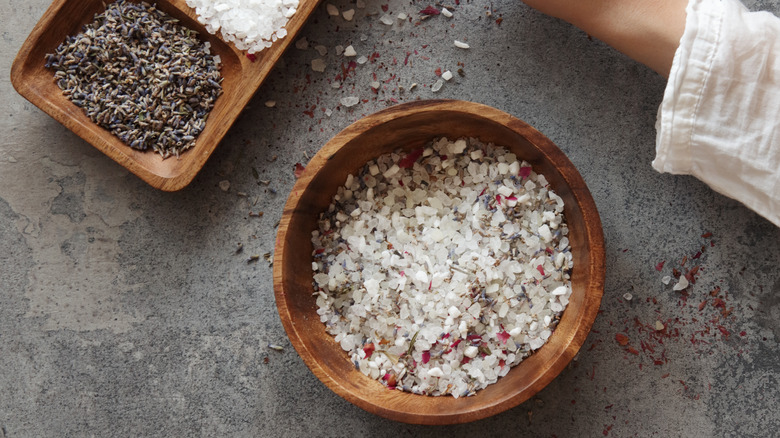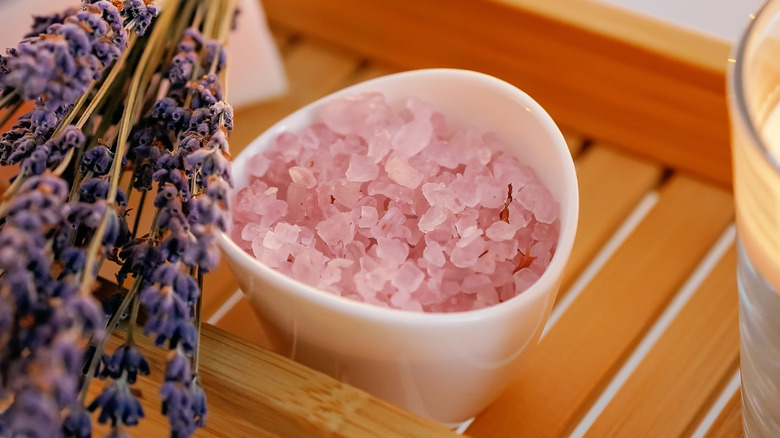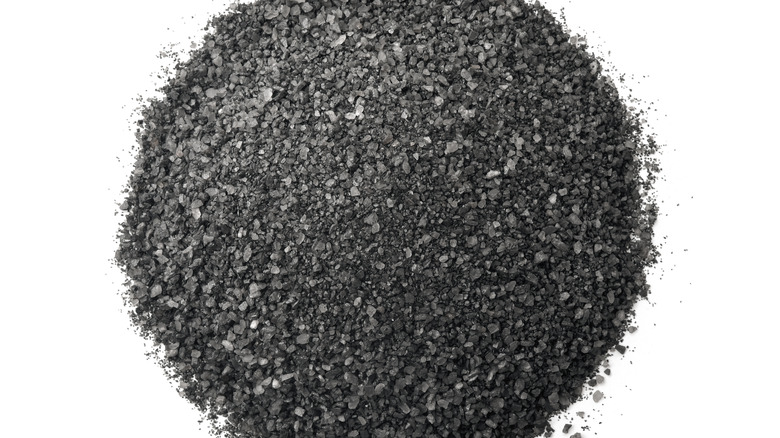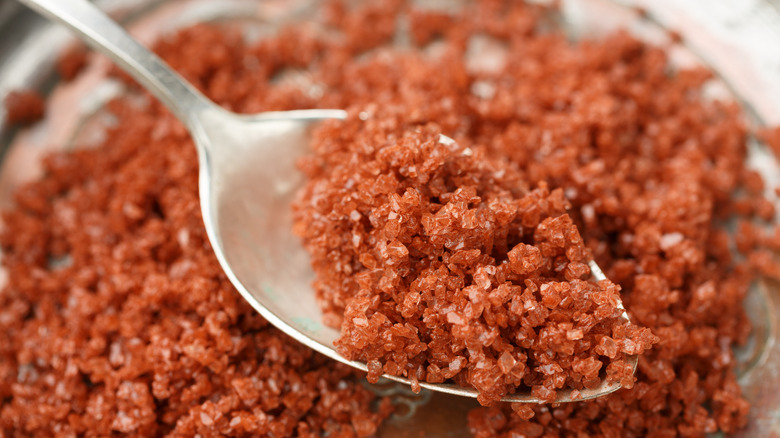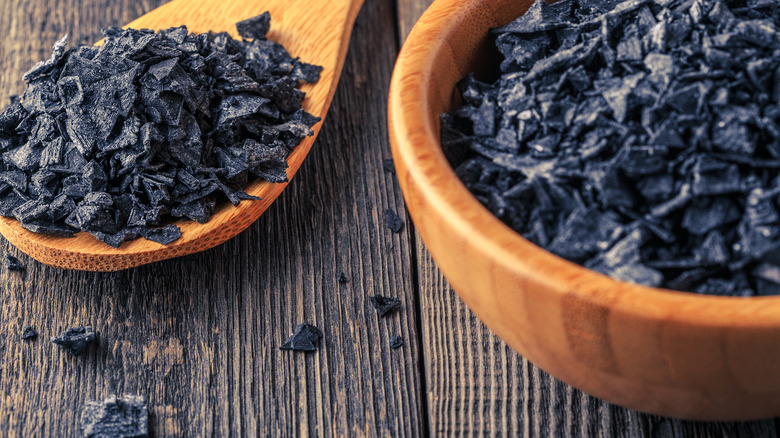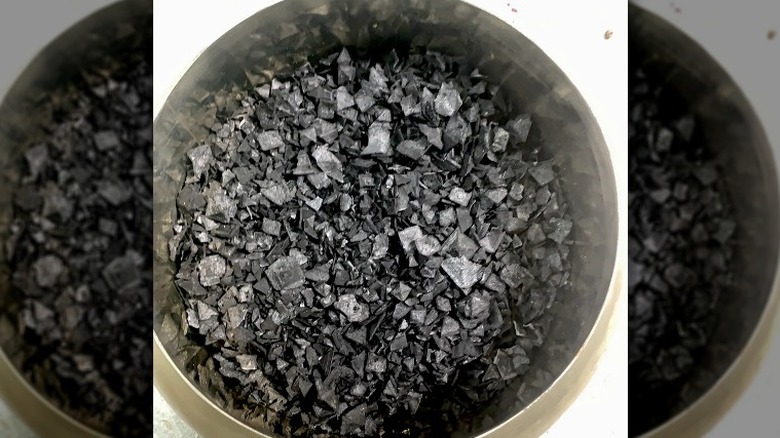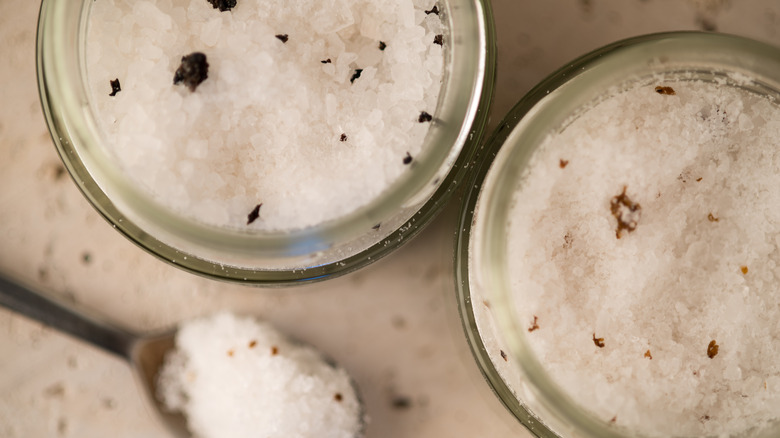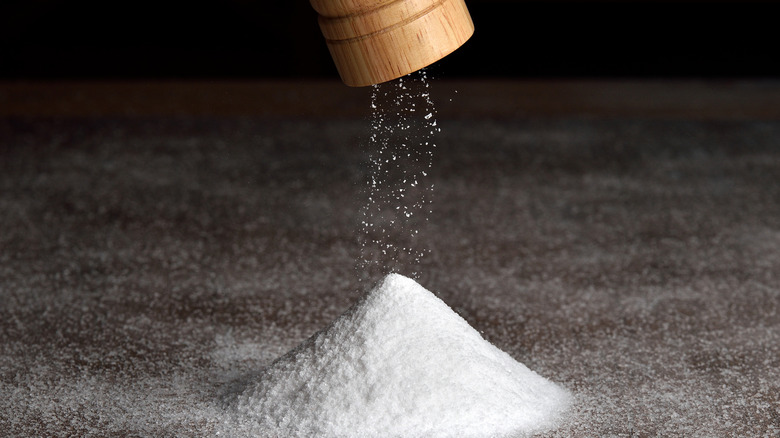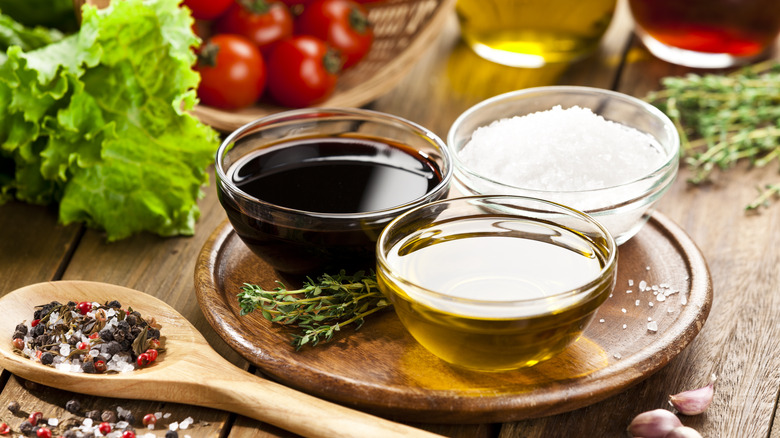So Many Different Types Of Salt, So Little Time. Here's An Easy Guide.
What is salt, exactly? When we talk about edible salt that we consume, we're talking about sodium chloride, or mineral mixes that are mostly sodium chloride. It's one of the oldest and most widely used seasonings — archaeologists have found evidence of salt production that goes back as far as 8,000 years. Saltiness is also one of the five basic tastes we experience, along with sweetness, sourness, bitterness, and umami.
How is it made? Depending on the local mineral mix and evaporation methods, you're going to get vastly different salts with different textures, flavors, and uses. Let's take a look into the most notable types of salt, with guidance on how to use them.
Table salt
This is the basic stuff you'll find in most salt shakers. Most table salt is mined, but that salt is put into water, purified of other trace minerals, then re-dehydrated to create a uniform product. Table salts are usually 97% to 99% sodium chloride, with some added anti-caking agents, and a lot also include iodide, which is an essential nutrient that can get removed during the purification process (not to be confused with iodine). That's why the packages of many unrefined kinds of salt say "not a source of iodide."
Kosher salt
This is refined salt with larger crystals than normal table salt and no additives (like iodide). Despite its name, only some brands are actually certified by a hechsher as having met Kosher requirements. The name is actually due to the fact that this type of large-crystal salt is used in making meats kosher (another name for it is "Koshering salt").
Sea salt
This comes straight from evaporated sea water. Depending on the area the water is coming from, its particular mineral content and the method used to evaporate, sea salts can vary quite a bit. The salt you see here is called Maldon, harvested off the coast of Great Britain. These large, delicate flakes are made by boiling seawater to first remove impurities, then continuing to heat it until the salt crystallizes. The salt is then "drawn" by an expert salt maker to keep the large, flaky crystals intact, a notable quality that makes this particular variety a great finishing salt (though most sea salts are very versatile and can be used as both a dish finisher and a dish builder). A common variation on sea salt is to smoke it, which I can envision originally happening by accident on some beach where salt was drying near fish that were being smoked.
Fleur de sel/Fiore di cervia (flower of salt in French and Italian)
Originally hailing from the Brittany coast in France and considered by many to be the Cadillac of salts, this salt is not crushed or ground but rather harvested from the top of saltwater ponds as the very top layer starts to crystallize. It's lower in sodium than normal salt, with a higher mineral content and light, briny flavor, meaning the sticky little crystals are used more as a condiment to finish a dish than as a seasoning.
The Italian version of fleur de sel is made the same way, but with different water, so it comes out less briny and a little less mineral-y. Spain and Portugal also have their own versions, both called flor de sal, used in the same way.
Sel gris (gray salt)
This comes from the same salt pans as fleur de sel, but isn't the cream of the crop. While fleur de sel is harvested from the top layer, sel gris is allowed to fall to the bottom of the salt pan before being harvested, giving it a higher mineral content and a gray color. This falls somewhere between basic sea salt and fleur de sel in both flavor and use, and it can also be ground very finely with volcanic rocks to make what is called sel gris-velvet, which creates an almost buttery feel as it melts on your tongue.
Pink salt
Known for its bright pink hue and occasional utilization as a food vessel, the Himalayan version of this salt is mined in the Punjab region of Pakistan, mainly from the Khewra Salt Mine. The lesser-known Bolivian version is mined from the Andes mountains. While the salt's pink color comes from trace amounts of iron oxide, the salt is predominantly sodium chloride, in the same chemical general range as basic table salt.
Himalayan black salt
This vibrant salt is actually more purple-red than black in its solid form, and when you grind it down it takes on a pinkish hue, but its formal name, kala manak, translates to "black salt." The color comes from the mineral greigite, and its pungent smell comes from its sulfur content. It has a cool square crystal structure that can make certain pieces look synthetic (akin to broken safety glass). When used properly, it can be added to vegan food to mimic the taste of eggs, though if you use it wrong your food may end up tasting like salty rotten eggs.
Hawaiian alaea red salt
This varietal is made from standard Hawaiian sea salt (20% trace minerals, so pretty low sodium compared to table salt) combined with the red volcanic clay alaea, which is said to have detoxifying properties. It's used in a lot of native Hawaiian dishes and has historically been used in religious ceremonies. It can add a flash of color as a finishing salt and is also a good choice for those watching their salt intake since it has lower sodium content than normal table salt.
Hawaiian black lava salt
This salt is made from sea water that evaporates in pools situated on hardened lava flows. The crystals are then mixed with activated coconut charcoal (again, for detoxification). It looks like little bits of hardened lava rock and brings a really earthy flavor along for the ride with just a slight sulfur aroma from the minerals in the lava pools.
Cyprus black lava salt
This one is similar to the Hawaiian version but hails from the island of Cyprus in the Mediterranean Sea. These large pyramid-shaped crystals are formed during natural solar evaporation and can grow to be over a millimeter in size. Also mixed with activated charcoal, these look like actual pieces of charcoal, have a very mild salt flavor, and can add great texture when used to finish a dish (without overwhelming you with salt).
Truffle salt
One of the most common flavored salts, truffle salt is a great way to impart a subtle amount of truffle into a dish without needing to buy actual truffles. There are versions that incorporate both black and white truffles, and different brands use different salts mixed with varying amounts of tiny truffle bits. The white truffle salt pictured here is made with fleur de sel and is superb for finishing a simple dish that needs a little something special.
Other regional salts
The variety of sea salts is almost endless. Basically, anywhere there is salt water or where there used to be salt water (even millions of years ago), there can be salt production, so, yeah, most of Earth. Here are some of the more interesting salts I came across in my research:
Persian Blue Diamond salt: Extracted from salt mines in the Semman province of ancient Persia (now Iran), the mineral content of this unique salt gives it small flecks of blue on some of the crystals. Kona deep water sea salt: Water is brought up from depths of about 2,200 feet off the Hawaiian coastline and is then evaporated in the sun. This salt has only 78 percent sodium and has a very clean flavor despite its rich mineral content. Alaska flake sea salt: Harvested directly from the seawater around Sitka, Alaska, this salt has nice, clear, brittle flakes. New Zealand Lake Grassmere salt: Water is harvested from the deep ocean and brought to the seaside ponds surrounding Lake Grassmere. At the end of the summer, the salt crust is lifted from the bottom of the ponds. Korean sogeum salt: Used for making kimchi, this salt is solar evaporated on a small island off the coast of Korea and looks like little blocks.
Sal de Gusano: Dried worm larvae are toasted and ground with rock salt and chile peppers to make this traditional Mexican salt, used as a smoky seasoning and as an accompaniment to mezcal. Antarctic sea salt: Antarctic waters are carried up the west coast of Africa by the Benguela current, then pass through an underground aquifer on their way to being dried under the severe African sun coupled with strong offshore winds.
Flavored salts
It might seem odd to flavor a salt since it's meant to bring out the natural flavors of foods, but it's a great way to subtly add an extra punch to a dish. Herbs de Provence salt will be less herbal-tasting than the herb mix itself, so you can add just a touch of herbaceousness to something as you finish it. The other salts you see pictured are chipotle, which will add a little heat and smoke; celery, which is a staple of the Bloody Mary (only the seeds are used); seasoned (also known as season salt, seasoning salt, chip spice, and chicken salt), which is a ubiquitous spice for fried food; and merlot, which has a fantastic color and carries the scent of wine. All of these things add a unique flavor to food, and all you need to do is salt the dish to add flavor.
